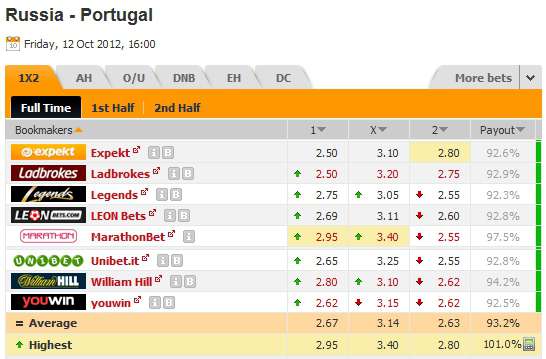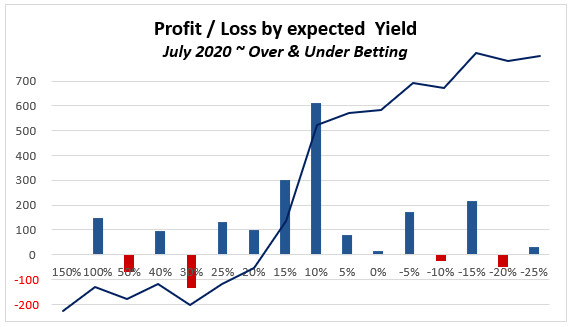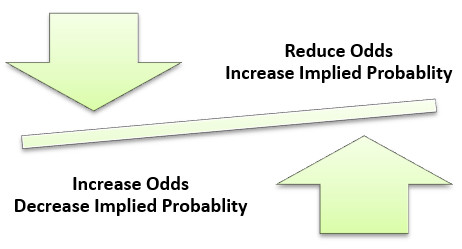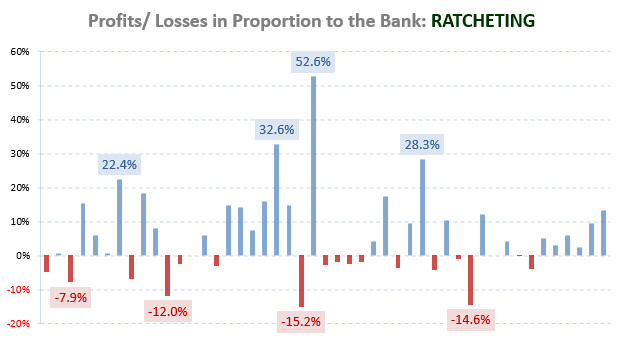
Simply put, overround is the bookmaker’s profit margin. Overround percentages vary and usually average between 4 and 7%, depending on the bookmaker.
Although bookmaker odds do not always fully represent the ‘true’ (expected) probability distribution you may sometimes find it necessary to remove the overround from the market odds.
What Exactly is Overround?
The screenshot below shows a number of bookmaker odds for the match Russia v Portugal (courtesy of Oddsportal). You can clearly see the odds for Russia to win at home were between 2.50 (lowest) and 2.95 (highest):

The average odds in the market for Russia to win this game were 2.67 at the time of the screenshot
(NB. The screenshot is cropped and only shows a handful of bookmakers from a long list of over 50 different firms quoting odds for this match. The average odds are therefore based on figures from all the bookmakers, not just the small selection shown).
To convert odds into probabilities divide 1 by the odds. The following table shows odds converted into probabilities for Expekt (lowest home odds), Marathonbet (highest home odds) and William Hill (middling odds):

As you can see, when adding up the home, draw and away probabilities for each bookmaker there is not a single line which exactly totals 100%.
For example, Expekt’s probabilities add up to 108%, meaning that they were serving this market with an overround of 8%.
At Marathonbet the overround was 2.5%.
With 99% showing in the totals column for the highest odds available for the home win, draw and away win, you will understand this is a negative overround of -1% (99 minus 100). Consequently, negative overround situations present arbitrage opportunities. Betting on all three results using the highest odds available would produce a no-lose bet with a guaranteed 1% profit.
Which Bookmaker’s Odds Represent the Expected Probability Distribution?
If you look a little closer at the image above you will notice that not only the overrounds vary but the probabilities also differ substantially.
This begs the question which of this set of odds and probabilities comes closest to the true expectations?
Expekt were pricing the home win as a 40% probability; Marathonbet’s price equated to a 33.9% chance; the market average suggested a 37.5% home win likelihood.
The answer is therefore none, some, and all, and on the face of it, this may seem quite confusing!
But you must be aware that it is not the goal of bookmakers to predict the expected probability distribution as correctly as possible. Their main objective is balancing the books. Therefore, odds are adjusted to demand. Bookmakers take public opinion into account and hence, quite often their odds do not reflect the true statistical-mathematical expected distribution.








Hey Guys,
If I understand correctly, you used the value calculator to calculate the true odds for the match between Russia and Portugal.
But I thought the value calculator could only be used for league matches between sides which have had minimum H2H matches and matches in the league? How does that work?
Sorry as my question is off-topic for overround.